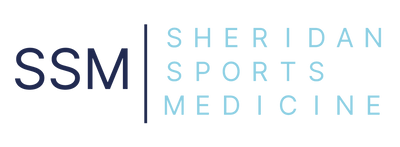Shoulder arthritis is a problem of the the ball and socket joint (known medically as the glenohumeral joint.) It can lead to severe problems with shoulder function due to progressively restricted range of movement and pain.
Shoulder arthritis is less common than arthritis in some other joints like the knees and hips. However, since pain-free mobility in the shoulder is vitally important for many activities of daily living, as well as for sports such as golf, tennis and swimming, the impact on the lives of people suffering with this condition can be huge.
Shoulder arthritis can develop as a result of various factors, including:
1) Wear and tear over time (osteoarthritis): As we age, the protective cartilage that cushions the ends of our bones in the shoulder joint can wear down, leading to arthritis. Why some patients are more prone to this than others is an area of ongoing research. Certain occupations that result in increased loading of this joint over the years, especially if associated with injury to other protective structures around the shoulder like the rotator cuff, may also increase the risk of shoulder arthritis.
2) Inflammatory conditions like rheumatoid arthritis: This autoimmune disease can cause inflammation and damage to the joints, including the shoulder.
3) Traumatic injuries or repetitive stress: Previous shoulder injuries, such as fractures or dislocations, or repetitive overhead activities, can increase the risk of developing arthritis in the shoulder joint.
While shoulder arthritis can affect individuals of any age and gender, it's more prevalent in older adults, particularly those over the age of 50. Men and women are affected equally by osteoarthritis, while rheumatoid arthritis tends to affect women more commonly.
The symptoms of shoulder arthritis may include:
1) Pain in the shoulder joint, especially with movement or weight-bearing activities. Night pain is often reported.
2) Stiffness and limited range of motion in the shoulder.
3) Swelling and tenderness around the joint.
Diagnosing shoulder arthritis involves a thorough medical history and physical examination. Imaging studies such as X-rays are essential for confirming the diagnosis and assessing the extent of joint damage. X-rays can reveal characteristic changes in the joint, such as narrowing of the joint space, bone spurs, and irregularities in the bone.
Ultrasound imaging can also be valuable for ruling out other conditions and evaluating the integrity of the rotator cuff tendons, which can impact treatment options. In cases where a rotator cuff tear is present, known as ‘cuff arthropathy,’ treatment may need to be adjusted accordingly.
Treatment for shoulder arthritis aims to reduce pain, improve function, and slow the progression of joint damage. Conservative treatment options may include:
1 Medications: Anti-inflammatory drugs or pain relievers may help reduce inflammation and alleviate symptoms. Medications carry side effects and so your doctor will need to be discuss these with you in detail and weigh your personal risks against the benefits of the medication.
2 Physical therapy: Specific exercises and stretching routines can improve shoulder strength, flexibility, and stability.
3 Injections: Corticosteroid injections or hyaluronic acid injections directly into the shoulder joint can provide temporary relief of pain and inflammation. This has been found in a systematic review of randomised controlled trials, finding evidence supporting the effectiveness of hyaluronic acid injections in reducing pain and improving function in patients with shoulder arthritis.
4 Suprascapular nerve blocks: These injections can help alleviate pain by targeting the nerves that supply sensation to the shoulder joint.
In severe cases where conservative treatments fail to provide relief, surgical options may be considered. Shoulder replacement surgery, including both traditional and reverse shoulder replacements, may be recommended depending on the extent of joint damage and the integrity of the rotator cuff muscles.
Traditional shoulder replacements are suitable for patients with intact rotator cuff tendons and adequate shoulder function. A reverse shoulder replacement by contrast is a specialised procedure designed for patients with certain types of shoulder arthritis or severe rotator cuff tears that cannot be repaired. It involves reversing the anatomy of the shoulder joint; placing the ball component on the shoulder blade and the socket component on the top of the arm (humerus) bone. Recovery from shoulder replacement surgery typically involves a period of immobilisation in a sling, followed by physical therapy to regain strength and mobility. Driving and other activities may need to be restricted during the recovery period. Many patients find it helpful to speak with an experienced MSK physician to check if non-surgical treatments have been fully explored and help decide if the time is right to be referred on to a surgeon.
Shoulder arthritis can significantly impact daily life, but with proper diagnosis and treatment, individuals can effectively manage their symptoms and maintain function. Seeking guidance from a sports and exercise medicine specialist can help connect patients with the right surgeon and treatment plan tailored to their needs. While evidence for treatments like PRP (platelet-rich plasma) therapy is still developing, ongoing research may provide additional options for managing shoulder arthritis in the future.


